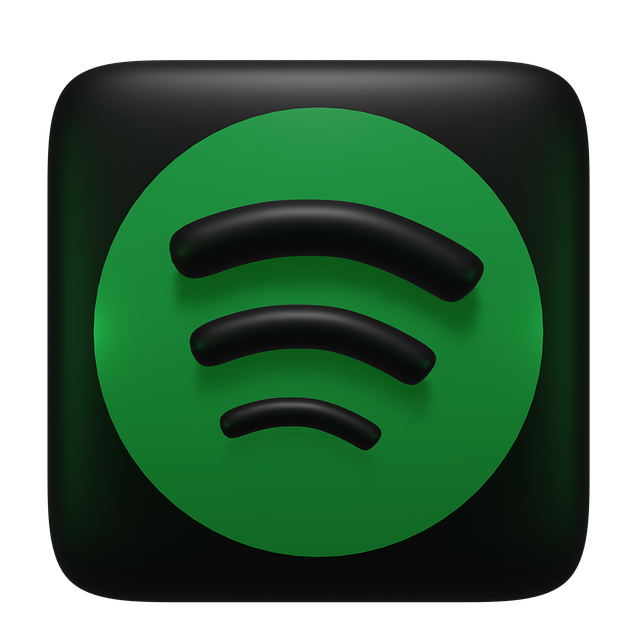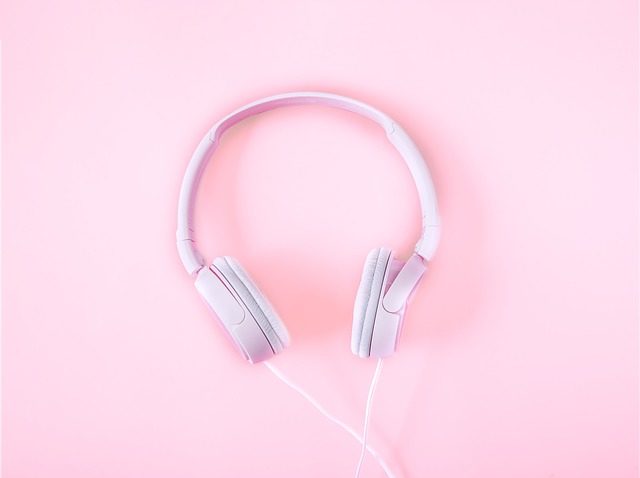Are you an artist looking to grow your audience and make a lasting impression on the music scene? Look no further! Playlisting has the power to transform your music career, and this ultimate guide will equip you with the knowledge and tools you need to succeed in the competitive world of playlisting in 2023. Let’s dive in and explore the incredible potential of Spotify playlisting services!
Table of Contents
Key Takeaways
**Grow your audience with playlisting: understand the power of Spotify Playlists and strategies for success.
Build relationships with curators, craft captivating pitches, and use data & insights to overcome challenges.
Promote playlists through social media & collaborations for increased visibility & new listeners!**
Understanding the Power of Playlisting

Playlisting is a game-changer for artists, as it can significantly impact their visibility and growth, particularly on Spotify, the primary platform for playlist promotion. Getting your music onto Spotify playlists, such as editorial playlists, can lead to substantial growth, with some artists experiencing placements on over 1000 playlists as a result of being added to just 30 through playlist promotion. One effective way to achieve this is by utilizing Playlist Push to help get your music on these influential playlists.
Let’s explore the mechanics of playlisting and its significance in advancing your music career.
The Role of Spotify Playlists
Spotify playlists are instrumental in promoting music discovery, giving your tracks exposure to a vast audience and drawing the attention of labels, curators, and Spotify editors. There are three primary types of Spotify playlists: editorial, user-created, and algorithmic.
Editorial playlists are curated by Spotify’s in-house editorial team, while user-created playlists are made by Spotify users and can cover various themes and genres. Algorithmic playlists, on the other hand, are generated by Spotify’s algorithms based on the user’s listening habits and preferences, such as Discover Weekly and Daily Mix playlists. An editorial playlist can be a great way to discover new music.
An effective method to amplify your chances of featuring on Spotify’s renowned editorial playlists is to prioritize lesser-known user-curated playlists. This tactic increases the likelihood of grabbing Spotify editors’ and algorithmic playlists’ attention, leading to an increase in streams and loyal audiences.
How Playlisting Impacts Your Music Career
Though playlisting can pave the way for increased streams, new fans, and opportunities, a balanced promotion strategy is pivotal. Even though playlisting is a cost-efficient way to get streams, artists shouldn’t rely on it as their only marketing strategy.
One of the initial steps to getting your tracks playlisted is releasing them through a digital distributor. However, artists should be cautious when researching playlisting and other music promotion services, as there are fraudulent services that offer fake streaming plays in exchange for cash.
Success in playlisting hinges on artists’ ability to build relationships with curators and craft compelling pitches for their music.
Strategies for Success in Playlisting

To fully exploit playlisting, artists should focus on fostering relationships with curators and perfecting their music pitches. By focusing on these two key aspects, artists can significantly increase their chances of success in playlisting.
Building Relationships with Curators
Networking with playlist curators is a key component for achieving success in playlisting as it paves the way for relationship building, which can increase artists’ chances of featuring on playlists. The best practices for networking with curators include researching the curator, creating a personalized pitch, and following up with them.
Engaging with curators can help artists gain exposure, build relationships, and increase their chances of getting featured on playlists. To sustain relationships with curators, it’s important to stay in touch, provide feedback, and thank them for their support.
Investing time and effort in networking and engagement with curators can significantly elevate the chances of playlist placement – both being integral parts of a successful playlisting strategy.
Crafting the Perfect Pitch
A carefully crafted pitch is crucial to grab the attention of playlist curators, persuading them to feature your music in their playlists. A good music pitch should captivate the listener with a unique and powerful story, conveying meaning and emotion through the use of different pitches.
To craft a unique and powerful story, focus on your artist’s unique selling points and why their music is a good fit for the playlist. Consider the artist’s background, genre, and style, and use this information to create a compelling narrative.
Identifying and reproducing the right pitch with precision is vital for the creation and performance of music, ensuring the music’s tune and the accurate conveyance of the song’s emotion and meaning by the artist.
Navigating the World of Playlisting Services
The world of Spotify playlisting can be complex, with both legitimate and fraudulent services available. Most playlisting services focus on getting music onto user-created Spotify playlists, which can be a powerful way to gain exposure and attract listeners on streaming services.
Nevertheless, when evaluating playlisting services, artists must tread carefully to avoid scams and ensure their investments are beneficial to their music career.
Evaluating Legitimate vs. Fraudulent Services
Legitimate playlisting services provide genuine exposure and do not engage in deceitful practices, such as phony streams or automated plays. Fraudulent playlisting services, on the other hand, use phony streams and engage in complex scams to take money away from genuine artists.
Thorough research and caution are necessary when identifying and avoiding fraudulent playlisting services. Some examples of legitimate playlisting services include:
Spotify for Artists
Submit Hub
Repost Exchange
MySphera
Musosoup
Artists can boost their chances of success in playlisting and circumvent potential risks associated with fraudulent services by meticulously evaluating playlisting services and opting for a legitimate provider.
Top Playlisting Services in 2023
The top playlisting services in 2023 include Spotify for Artists, Submit Hub, Repost Exchange, MySphera, and Musosoup. Spotify for Artists is a platform that allows artists to manage their presence on Spotify, including submitting music for playlist consideration and optimizing their Spotify profile.
Submit Hub is a service that aggregates a huge selection of Spotify playlists that artists can submit their tracks to for free, greatly increasing the chances of getting a placement. Repost Exchange puts particular emphasis on SoundCloud promotion. It has a distinct model compared to other playlisting services. Becoming a member of Repost Exchange is the ultimate goal for many. It is a great way to get a major playlist or influencer to repost your song on SoundCloud.
Musosoup is a subscription-based platform. It provides artists with the opportunity to:
Submit their tracks to various playlist curators, blogs, and radio stations
Optimise their chances of success in playlisting
Expand their audience by leveraging these top playlisting services
Case Studies: Successful Playlisting Campaigns
Looking at case studies of successful playlisting campaigns can provide valuable insights and inspiration for artists looking to grow their audience. These success stories showcase the power of playlisting and demonstrate how artists can leverage playlist placements to boost their visibility and popularity.
Some outstanding examples of successful campaigns include Taylor Swift’s “Lover” campaign, which saw her song reach the peak of the Billboard Hot 100 chart, and Billie Eilish’s “Bad Guy” campaign, which saw her song reach the top of the Billboard Hot 100 chart. These case studies highlight the importance of building relationships with curators, crafting the perfect pitch, leveraging data and insights from playlisting, and overcoming common playlisting challenges to get your favorite songs noticed.
Artists can cultivate their strategies for playlisting success and broaden their audience by taking cues from successful playlist push campaign examples.
DIY Playlisting: Creating and Promoting Your Own Playlists
Creating and promoting your own many playlists can be an effective DIY approach to playlisting. By curating a playlist with a mix of established and emerging artists, you can increase its appeal and attract listeners. Additionally, exploring third party playlists can provide inspiration and help you discover new music to include in your own playlists.
Elevating the visibility and reach of your playlist can also be achieved by promoting it through social media, collaborations, and other marketing channels.
Curating Your Playlist
Curating a playlist involves selecting songs that align with your personal taste or a specific theme and organizing them in a specific order. Mixing established and emerging artists in a playlist can help to increase its appeal and attract more listeners. Established artists can bring in an existing fan base, while emerging artists can bring in new listeners who are looking for something fresh and exciting.
Regularly infusing the playlist with new music is vital to maintain its freshness and engagement, thereby creating a unique and captivating playlist. This not only makes your playlist more appealing to listeners, but also helps to showcase your taste and curatorial skills, helping you stand out from the crowd.
Promoting Your Playlist
A vital step in the DIY playlisting process is promoting your playlist. You can promote your playlist by:
Sharing it on social media
Creating a website or blog dedicated to the playlist
Reaching out to influencers and curators
Utilizing platforms like Instagram Live, Twitter, and Facebook to increase visibility and attract new listeners.
Collaborating with other artists and curators can be a great way to expand your reach and increase the visibility of your playlist. By making contact with other artists and curators through social media, email, or other platforms, you can create mutually beneficial partnerships that help promote your playlist and grow your audience.
Leveraging Data and Insights from Playlisting
Artists can enhance their understanding of their audience and fine tune their promotion strategies by utilizing data and insights from playlisting. By analyzing customer behavior and preferences, artists can create personalized playlists and recommendations that resonate with their target audience.
Spotify for Artists provides artists with:
More insight into how and where their music is being discovered
The ability to make informed decisions about their promotion strategies
The opportunity to better target their audience
By regularly analyzing data analytics and discussing results with their team, artists can continuously improve their playlisting efforts and increase their chances of success.
For more information please visit How Music Streaming Platforms Leverage Listening Data
Overcoming Common Playlisting Challenges
Addressing common playlisting challenges is vital for achieving long-term success in the music industry. Some of the most common challenges include:
Getting your tracks on streaming playlists to reach a wider audience
Organizing and categorizing playlists effectively
Winning over musician skeptics
Turning a profit from streaming music
Appealing to a more mainstream audience while maintaining your unique artistic identity.
Artists can overcome these challenges by:
Concentrating on building relationships with curators
Crafting persuasive pitches
Utilizing data and insights from playlisting
Consistently refining their promotion strategies
By addressing these challenges head-on, artists can achieve long-term success in the music industry and grow their audience.
Summary
In conclusion, playlisting is a powerful tool for artists looking to grow their audience and make a lasting impression in the music industry. By understanding the power of playlisting, building relationships with curators, crafting the perfect pitch, navigating the world of playlisting services, and overcoming common challenges, artists can unlock the full potential of playlisting and experience incredible growth. It’s time to take control of your music career and embrace the power of playlisting!
Frequently Asked Questions
What is the meaning of playlisting?
Playlisting is the act of creating tailored lists of songs to fit specific genres or moods, as performed by stores, streaming platforms, and independent curators.
These playlists can be used to discover new music, create a specific atmosphere, or simply provide a soundtrack for any occasion. They can be tailored to the listener’s individual tastes, or to a particular event or theme.
Playlisting.
How does playlisting work?
Playlisting is a curating service where users can customize their own list of songs to fit any genre or mood, from Hip-Hop to Pop and Rock, or calming playlists with chilled out vibes to party playlists for wilder moments.
These playlists can be tailored to any occasion, from a romantic dinner to a night out with friends, or even just to relax and unwind. With the right playlist, users can create the perfect atmosphere for any event.
Does Spotify playlisting work?
Absolutely! Playlist pitching can be highly successful. It’s important to do your research, however – as it’s possible to pay a pitching company too much and get zero results, or too little and end up with foreign language playlists that drive fake streams.
Make sure you’re aware of the risks before diving in.
How much do playlist push people get paid?
Playlist Pushers earn $1.25 to $15 per song, depending on the amount of listeners and their activity, which is determined by Reputation Score.
Reputation Score is determined by the number of plays, likes, and shares a song receives. The more activity a song receives, the higher the Reputation Score and the more money a Playlist Pusher can earn.
How can artists maximize their chances of getting featured on Spotify’s editorial playlists?
To maximize chances of getting featured on Spotify’s editorial playlists, focus first on getting onto lesser-known user-curated playlists.
Then optimize track metadata and network with curators to increase visibility.









